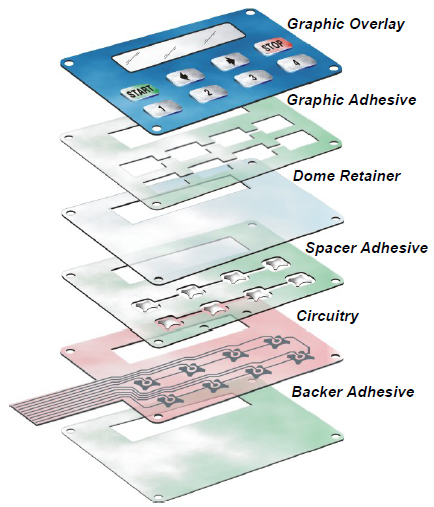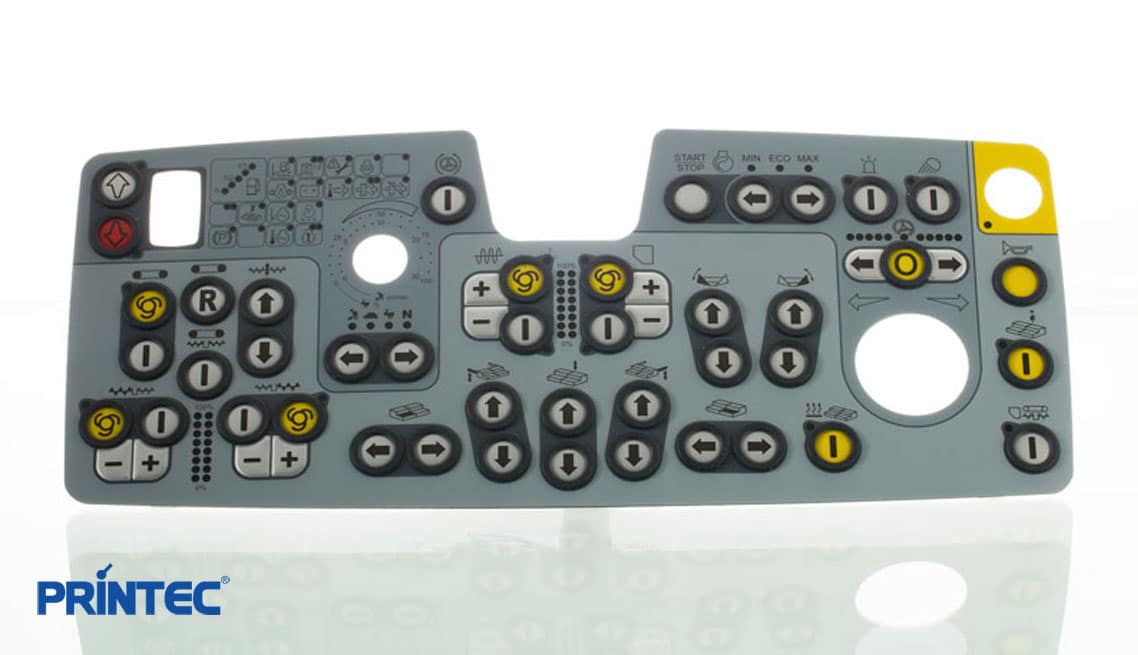Don’t ignore the value of working with a proven membrane switch manufacturer for mock-ups.
Everything About Membrane Switch: Understanding Its Design and Capability
When you consider the control interfaces in modern-day tools, membrane switches commonly enter your mind. These parts are greater than simply buttons; they blend style and performance effortlessly. Understanding just how they function and what makes them reliable can transform your perspective on everyday electronic devices. But, there are nuances to their layout and efficiency that you might not be conscious of. Allow's discover what sets membrane changes in addition to other control systems.
What Are Membrane Layer Buttons?

Membrane buttons can also be customized pertaining to shape, dimension, and graphics, permitting producers to develop special user interfaces customized to details items. Overall, membrane buttons play a substantial duty in improving individual experience throughout a wide array of applications.
Just How Membrane Layer Switches Job
When you press a secret on a membrane layer switch, it activates an uncomplicated yet efficient system. The top layer, commonly constructed from flexible product, presses down onto a conductive layer beneath it. This action bridges the space between conductive traces, completing an electric circuit. As quickly as the circuit closes, it sends out a signal to the device's controller, which analyzes your input.
You'll notice that the responsive feedback differs based upon the button layout, using either a soft click or a more obvious action. As soon as you launch the trick, the membrane returns to its original placement, reopening the circuit and stopping the signal. This process takes place virtually instantly, making certain a receptive customer experience.
Membrane switches are popular due to their longevity and resistance to dirt and dampness, making them perfect for different applications, from household home appliances to clinical tools. Recognizing this operation assists you value their prevalent usage.
Trick Parts of Membrane Buttons
Understanding the essential elements of membrane layer buttons is basic for comprehending their performance and style. The safety layer shields against ecological aspects and put on, expanding the switch's life-span. By comprehending these parts, you'll gain understanding into just how membrane changes operate and their significance in different applications.
Materials Utilized in Membrane Switch Design
The efficiency and sturdiness of membrane switches heavily depend upon the materials made use of in their design. You generally come across polyester and polycarbonate as key substrates due to their outstanding strength and versatility. These materials withstand scratches and chemicals, making them excellent for demanding settings.
The conductive layers often utilize silver or carbon, picked for their reliability and conductivity. membrane switch manufacturer. Silver provides premium efficiency, while carbon is a cost-efficient alternative. For the overlay, you could take into consideration a matte or glossy coating, depending on your aesthetic demands and user experience
Adhesives play a vital role as well; they bond layers securely and guarantee durability. Ensure to select adhesives that withstand environmental elements like temperature and humidity. Do not forget the significance of an excellent printing strategy for graphics, as it improves both functionality and visual allure. Selecting the ideal products will guarantee your membrane switch stands the test of time.
Layout Factors To Consider for Membrane Buttons
While creating membrane switches, it's crucial to take into account numerous factors that influence their functionality and individual experience. Begin by focusing on the design and button size; make specific they're instinctive and very easy to navigate.
Validate your design suits environmental elements, like wetness or temperature variations, which can influence efficiency. By carefully thinking about these components, you'll develop a membrane button that boosts use and fulfillment.
Applications of Membrane Layer Buttons
Membrane switches are functional elements located in different applications, from industrial tools to customer electronics. You'll see their influence in equipments that require long lasting user interfaces and in gadgets that gain from streamlined layouts. Recognizing these applications assists you value the functionality and usefulness of membrane switches in daily innovation.
Industrial Tools Usage
When you're wanting to enhance the functionality of industrial tools, membrane buttons provide a trusted remedy that combines resilience with straightforward layout. These buttons are excellent for rough environments, supplying resistance to dirt, moisture, and chemicals. You'll locate them in control panels for producing machines, cooling and heating systems, and clinical devices, where accuracy and responsiveness are important. Their low account suggests they fit effortlessly right into different equipment, conserving useful room while preserving simplicity of use. With adjustable graphics and backlighting options, you can produce an intuitive interface for drivers, enhancing efficiency and safety. Plus, their lengthy life-span minimizes upkeep costs, making them a clever financial investment for your his response commercial applications. Accept membrane layer switches to enhance your procedures and enhance overall performance.
Customer Electronics Combination
In the domain of consumer electronic devices, membrane layer switches play a crucial role in improving customer communication and tool capability. You'll locate them in tools like microwaves, remotes, and gaming consoles, providing a smooth method to communicate with modern technology. Their smooth layout permits very easy assimilation right into various products, making controls instinctive and straightforward. With their capacity to integrate graphics and backlighting, you can delight in a modern visual that matches the device's overall appearance. Membrane layer switches likewise assure durability and resistance to dirt and wetness, expanding the lifespan of your electronic devices. By selecting membrane switches, you enhance not simply the performance yet likewise the style of your tools, making day-to-day interactions smooth and satisfying.
Advantages and Drawbacks of Membrane Buttons
While membrane buttons supply a range of benefits, they likewise come with some downsides that you need to think about. visit One substantial advantage is their portable style, making them perfect for space-constrained applications.

Membrane layer buttons can have a much shorter life-span compared to mechanical buttons, specifically under heavy use. They can likewise be much less tactile, which might affect customer comments during procedure. Balancing these pros and disadvantages Homepage will help you determine if membrane buttons are the ideal fit for your task.
Regularly Asked Questions
For How Long Do Membrane Layer Switches Normally Last?
Membrane switches over typically last between 5 to 10 years, relying on usage and environmental problems. You'll want to evaluate variables like wear, exposure to moisture, and temperature level changes to assess their durability properly.
Can Membrane Layer Switches Be Customized for Specific Designs?
Yes, you can personalize membrane layer buttons to fit certain styles (membrane switch manufacturer). You'll have the flexibility to choose shades, shapes, and designs that match your job's demands, guaranteeing they blend perfectly with your total aesthetic
What Is the Price Variety for Membrane Layer Change Production?
The expense range for membrane layer button production typically falls between $1 and $10 per unit, depending upon factors like style intricacy, amount, and materials. You can get quotes from suppliers to discover the very best choice.

Are Membrane Layer Switches Over Waterproof or Resistant?
Membrane layer switches can be developed to be water-proof or immune, relying on materials made use of and building methods. If you require them for wet atmospheres, ensure you define those requirements during the layout process.
Just How Do Membrane Layer Switches Contrast to Traditional Switches?
Membrane layer buttons are usually thinner and extra flexible than conventional switches, supplying a sleek design. They're usually much easier to cleanse and incorporate, yet might not provide the tactile feedback you're made use of to with mechanical alternatives.
Conclusion
